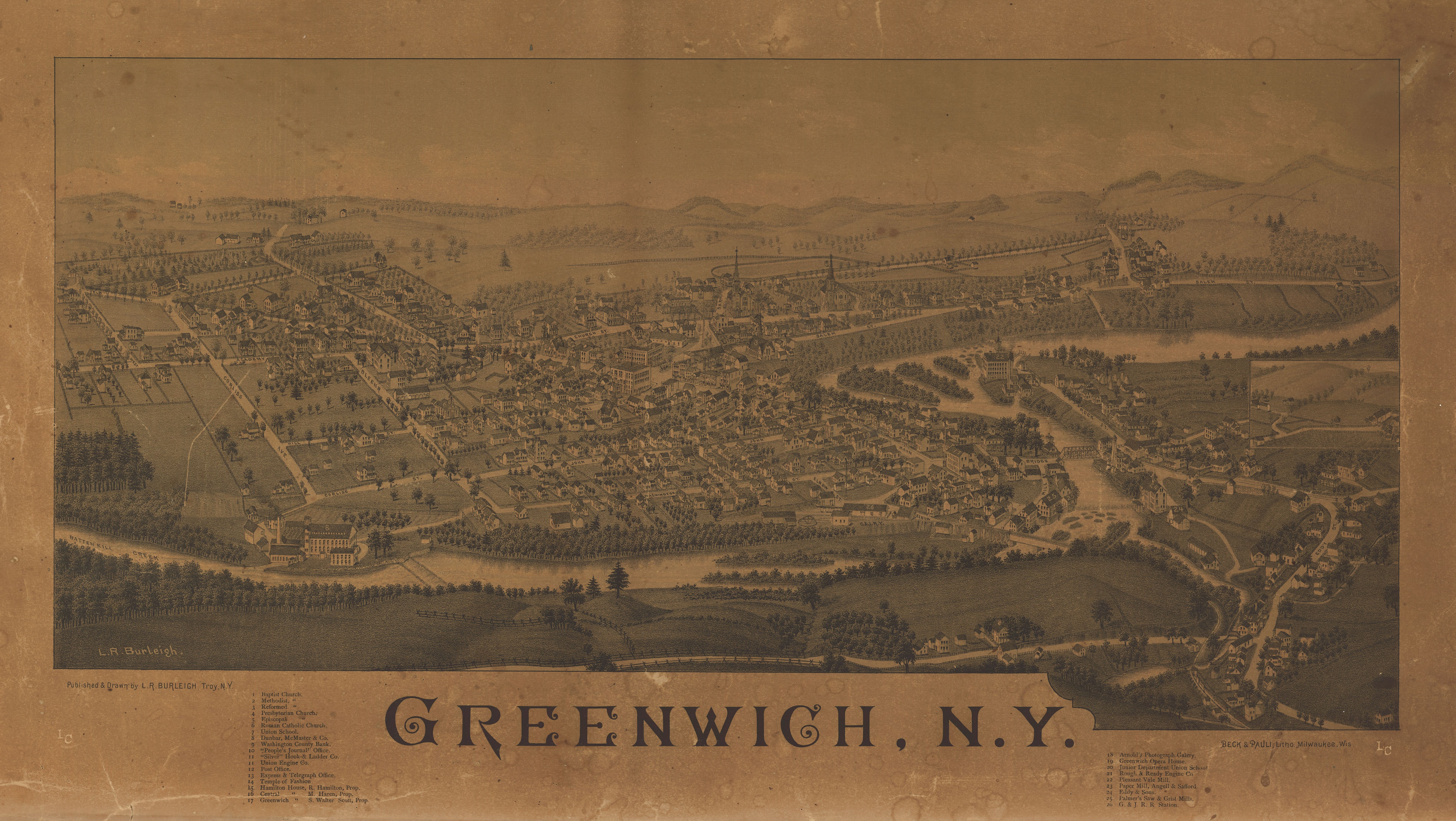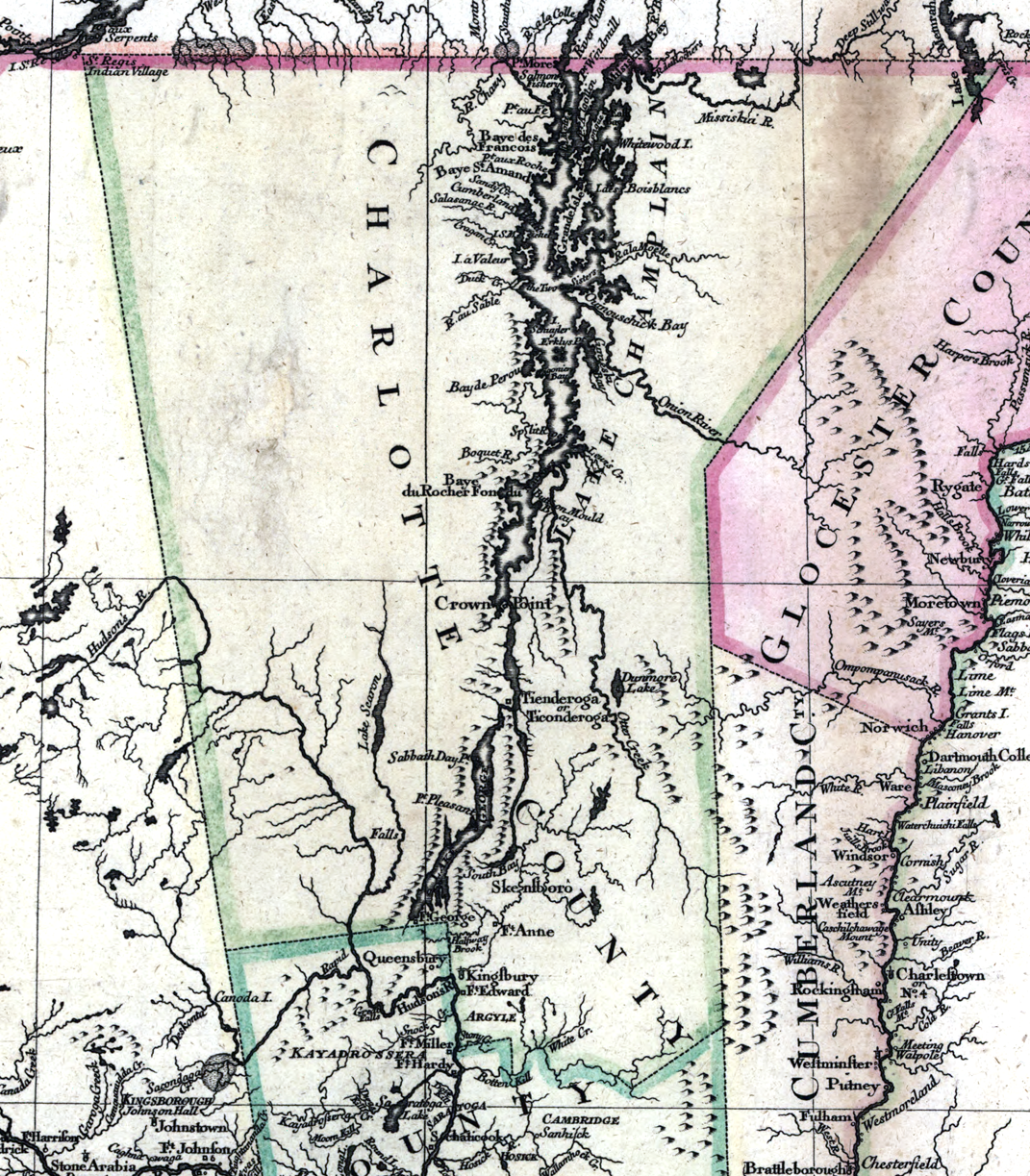|
Argyle, New York
Argyle is a town in Washington County, New York, United States. It is part of the Glens Falls Metropolitan Statistical Area. The town population was 3,644 at the 2020 census. The town was named by its many early settlers from Scotland after Argyllshire. History The lands of Argyle prior to becoming the town were used as hunting and fishing grounds for Native American Mohicans and subsequently the Mohawk tribes although Huron and Iroquois tribes may also have hunted here. During the period 1628 to 1664, the Mohawk tribe had a near exclusive fur trading monopoly with the Dutch New Netherland Colony based at nearby Fort Orange; now present day Albany. The town of Argyle was formed from the Argyll Patent of 1764 while still in Great Britain's Albany County, Province of New York and became a town in Charlotte County when that county was created on March 24, 1772. During the American Revolution, citizens of the town had divided loyalties between the Crown and the Rebel cause. ... [...More Info...] [...Related Items...] OR: [Wikipedia] [Google] [Baidu] |
Administrative Divisions Of New York
The administrative divisions of New York are the various units of government that provide local government, local services in the New York (state), State of New York. The state is divided into boroughs of New York City, boroughs, counties, cities, civil township, townships called "towns", and villages. (The only boroughs, the five boroughs of New York City, have the same boundaries as their respective counties.) They are municipal corporations, chartered (created) by the New York State Legislature, as under the New York Constitution the only body that can create governmental units is the state. All of them have their own governments, sometimes with no paid employees, that provide local services. Centers of population that are not incorporated and have no government or local services are designated Hamlet (place)#New York, hamlets. Whether a municipality is defined as a borough, city, town, or village is determined not by population or land area, but rather on the form of gover ... [...More Info...] [...Related Items...] OR: [Wikipedia] [Google] [Baidu] |
Fort Orange (New Netherland)
Fort Orange ( nl, Fort Oranje) was the first permanent Dutch settlement in New Netherland; the present-day city of Albany, New York developed at this site. It was built in 1624 as a replacement for Fort Nassau, which had been built on nearby Castle Island and served as a trading post until 1617 or 1618, when it was abandoned due to frequent flooding. Both forts were named in honor of the Dutch House of Orange-Nassau. Due to a dispute between the Director-General of New Netherland and the patroonship of Rensselaerswyck regarding jurisdiction over the fort and the surrounding community, the fort and community became an independent municipality, paving the way for the future city of Albany. After the English reconquered the region they soon abandoned Fort Orange (renamed Fort Albany) in favor of a new fort: Fort Frederick, constructed in 1676. History In 1624, a ship with 30 Protestant Walloons (French-speaking people from what is today southern Belgium) landed in New Nether ... [...More Info...] [...Related Items...] OR: [Wikipedia] [Google] [Baidu] |
History Of Slavery In New York (state)
The enslavement of African people in the United States continued in New York as part of the Dutch slave trade. The Dutch West India Company imported eleven African slaves to New Amsterdam in 1626, with the first slave auction held in New Amsterdam in 1655. With the second-highest proportion of any city in the colonies (after Charleston, South Carolina), more than 42% of New York City households held slaves by 1703, often as domestic servants and laborers. Others worked as artisans or in shipping and various trades in the city. Slaves were also used in farming on Long Island and in the Hudson Valley, as well as the Mohawk Valley region. During the American Revolutionary War, the British troops occupied New York City in 1776. The Philipsburg Proclamation promised freedom to slaves who left rebel masters, and thousands moved to the city for refuge with the British. By 1780, 10,000 black people lived in New York. Many were slaves who had escaped from their slaveholders in both Nort ... [...More Info...] [...Related Items...] OR: [Wikipedia] [Google] [Baidu] |
Fort Edward (town), New York
Fort Edward is a town and the county seat of Washington County, New York, United States. The population was 10,205 at the 2011 census. The municipal center complex is on U.S. Route 4 between the villages of Hudson Falls and Fort Edward.Google Maps (383 Broadway, Fort Edward, New York) Retrieved Jan. 14, 2015.New York State Unified Court System (Washington County) Retrieved Jan. 14, 2015. When construction of the complex was completed in 1994, most of the administrative offices were moved fr ... [...More Info...] [...Related Items...] OR: [Wikipedia] [Google] [Baidu] |
Hudson River
The Hudson River is a river that flows from north to south primarily through eastern New York. It originates in the Adirondack Mountains of Upstate New York and flows southward through the Hudson Valley to the New York Harbor between New York City and Jersey City, eventually draining into the Atlantic Ocean at Lower New York Bay. The river serves as a political boundary between the states of New Jersey and New York at its southern end. Farther north, it marks local boundaries between several New York counties. The lower half of the river is a tidal estuary, deeper than the body of water into which it flows, occupying the Hudson Fjord, an inlet which formed during the most recent period of North American glaciation, estimated at 26,000 to 13,300 years ago. Even as far north as the city of Troy, the flow of the river changes direction with the tides. The Hudson River runs through the Munsee, Lenape, Mohican, Mohawk, and Haudenosaunee homelands. Prior to European ... [...More Info...] [...Related Items...] OR: [Wikipedia] [Google] [Baidu] |
Greenwich (town), New York
Greenwich is a town in the southwestern part of Washington County, New York, United States. The town is located on the western border of the county. The population was 4,896 at the 2000 census. It is part of the Glens Falls Metropolitan Statistical Area. Greenwich features several homes that were a part of the Underground Railroad. The Town of Greenwich contains a village, also named Greenwich. History The Horicon tribe is believed to be part of the early native population of the town. Families began settling the area around 1763. The town was originally part of five land patents: Saratoga, Kettlehuyn, Cuyler, Campbell, and Argyle. The Town of Greenwich was formed from part of the Town of Argyle in 1803. In 1809, the community of Whipple City incorporated as a village and adopted the name Union Village. In 1867, the name was changed to Greenwich. Greenwich views itself as having been an important location along the Underground Railroad. A historical marker was placed ... [...More Info...] [...Related Items...] OR: [Wikipedia] [Google] [Baidu] |
Argyll
Argyll (; archaically Argyle, in modern Gaelic, ), sometimes called Argyllshire, is a historic county and registration county of western Scotland. Argyll is of ancient origin, and corresponds to most of the part of the ancient kingdom of on Great Britain. Argyll was also a medieval bishopric with its cathedral at Lismore, as well as an early modern earldom and dukedom, the Dukedom of Argyll. It borders Inverness-shire to the north, Perthshire and Dunbartonshire to the east, and—separated by the Firth of Clyde—neighbours Renfrewshire and Ayrshire to the south-east, and Buteshire to the south. Between 1890 and 1975, Argyll was an administrative county with a county council. Its area corresponds with most of the modern council area of Argyll and Bute, excluding the Isle of Bute and the Helensburgh area, but including the Morvern and Ardnamurchan areas of the Highland council area. There was an Argyllshire constituency of the Parliament of Great Britain then P ... [...More Info...] [...Related Items...] OR: [Wikipedia] [Google] [Baidu] |
9th New York State Legislature
The 9th New York State Legislature, consisting of the New York State Senate and the New York State Assembly, met from January 12 to May 5, 1786, during the ninth year of George Clinton's governorship, at the Old Royal Exchange in New York City. Background Under the provisions of the New York Constitution of 1777, the State Senators were elected on general tickets in the senatorial districts, and were then divided into four classes. Six senators each drew lots for a term of 1, 2, 3 or 4 years and, beginning at the election in April 1778, every year six Senate seats came up for election to a four-year term. Assemblymen were elected countywide on general tickets to a one-year term, the whole assembly being renewed annually. The 8th New York State Legislature adjourned on April 27, 1785. At this time, the Senate voted that the next Legislature meet at Kingston, New York on a day set by the governor. The Assembly voted to meet at a time and place to be determined by the governor ... [...More Info...] [...Related Items...] OR: [Wikipedia] [Google] [Baidu] |
Jane McCrae
Jane McCrea (1752 – July 27, 1777) was an American woman who was killed by a Native American warrior serving alongside a British Army expedition under the command of John Burgoyne during the American Revolutionary War. Engaged to a Loyalist officer serving under Burgoyne, her death lead to widespread outrage in the Thirteen Colonies and was used by Patriots as part of their anti-British propaganda campaign. Born in Bedminster, New Jersey, McCrea moved to Saratoga, New York where she became engaged to David Jones, a Loyalist. When the Revolutionary War broke out, Jones fled to Quebec while McCrea's brothers divided their loyalties between the British and the Patriots. During the Saratoga campaign of 1777, McCrea left her brother's home to join Jones who was stationed in Fort Ticonderoga. While staying at Fort Edward, McCrea was abducted, killed and scalped by a group of Native American warriors. Upon receiving word of the incident, Burgoyne attempted to punish the culprit ... [...More Info...] [...Related Items...] OR: [Wikipedia] [Google] [Baidu] |
American Revolution
The American Revolution was an ideological and political revolution that occurred in British America between 1765 and 1791. The Americans in the Thirteen Colonies formed independent states that defeated the British in the American Revolutionary War (1775–1783), gaining independence from the British Crown and establishing the United States of America as the first nation-state founded on Enlightenment principles of liberal democracy. American colonists objected to being taxed by the Parliament of Great Britain, a body in which they had no direct representation. Before the 1760s, Britain's American colonies had enjoyed a high level of autonomy in their internal affairs, which were locally governed by colonial legislatures. During the 1760s, however, the British Parliament passed a number of acts that were intended to bring the American colonies under more direct rule from the British metropole and increasingly intertwine the economies of the colonies with those of Brit ... [...More Info...] [...Related Items...] OR: [Wikipedia] [Google] [Baidu] |
Charlotte County, Province Of New York
Charlotte County was a county in the colonial Province of New York in the British American colonies. It was created from Albany County on March 24, 1772. The county was named for Charlotte of Mecklenburg-Strelitz, wife of George III of the United Kingdom. Its boundaries extended far further than any current county. Its western boundary ran from the northern boundary of Albany County to the Canada line, at a point near the old village of St. Regis. Its southern boundary was what is now the northern boundary of Saratoga County. Much of western Vermont, then claimed by New York, was also part of the county. Its northern border was also the Canada–US border. Its county seat was Fort Edward.Anderson p. 67 On April 2, 1784, the new state's |




_in_2008.jpg)




